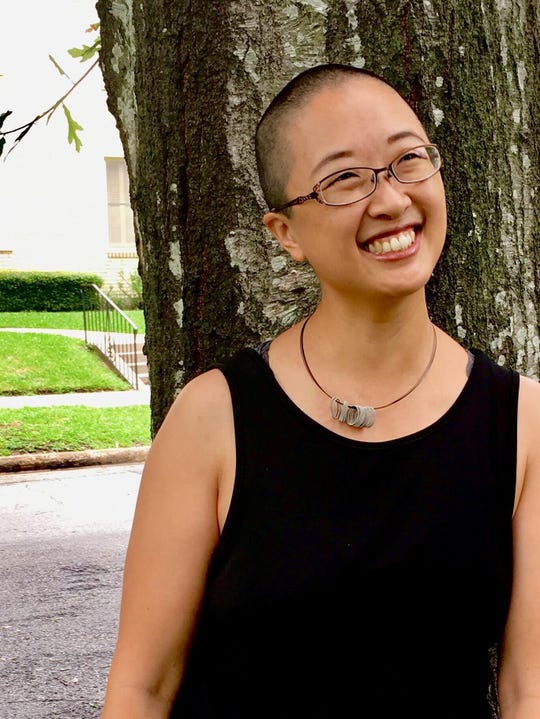































Scientists with disabilities have changed the world. These individuals pursued scientific exploration without letting societal barriers or others' negative views of their disabilities stop them.
Some of history's most famous innovators had physical or mental conditions that might be considered disabilities. These scientists served as pioneers or stars in their respective fields and brought visibility to disabilities as a whole.
Scientists of all kinds are among those celebrated during the International Day of Persons with Disabilities. In fact, millions of individuals working in science, technology, engineering, and math around the world today are considered disabled.
Now and throughout history, some scientists with disabilities prefer to keep their disabilities private, while others share openly. Still others incorporate their disabilities into their work.
A unifying thread among these 10 scientists with disabilities is their lasting impact on their field, their colleagues, and the world. The scientists below span disciplines and time. You may even recognize their names and accomplishments.
Thomas Edison
Born in 1847, Thomas Edison lost much of his hearing by his early twenties. Despite this, Edison worked in the field of telegraphy - transmitting information via communication systems - where he thrived as an innovator and inventor. In Edison's New Jersey lab, he developed audio devices, invented the incandescent lightbulb, and helped birth the motion picture industry. Edison received 1,093 patents before his death.
Temple Grandin
Temple Grandin was diagnosed with autism as a child and struggled with verbal communication throughout her youth. Grandin found success in academics and earned a master's degree in animal science in 1975. Grandin went on to become a pioneer in the field of animal behavior. She received a Ph.D. in 1989, has published extensively, and continues to work as a professor at Colorado State University.
Ralph Braun
After Ralph Braun's muscular dystrophy diagnosis, he developed groundbreaking mobility devices. Braun's experiences informed inventions like motorized scooters, wheelchairs accessible vehicles, and wheelchair lifts. He advocated for the education and employment of individuals with disabilities in science, technology, engineering, and mathematics. Braun, who died in 2013, is known as the "Father of the Mobility Movement."
Sang-Mook Lee
Born in Korea and trained as an oceanographer, Sang-Mook Lee was teaching in the United States when a car accident in 2006 paralyzed him from the shoulders down. The experience gave Lee a "bigger purpose" as a scientist and as an educator. Lee advocates for the development of assistive technology for science and engineering education while continuing his own research. His efforts span the world, including his native South Korea.
Stephen Hawking
After a diagnosis of amyotrophic lateral sclerosis at the age of 21, Stephen Hawking spent decades working as a mathematician and physicist. Hawking used a wheelchair, voice synthesizers, and other technologies to research, write, and communicate. Hawking contributed groundbreaking theories about the origins of the universe, black holes, radiaiton, and more. Hawking also published, taught, and won numerous awards for his scientific contributions before his death in 2018.
Geerat Vermeij
Geerat Vermeij is an evolutionary biologist who has been blind since childhood. He uses touch in his work with molluscs as he investigates extinct species and their predators. Vermeij attributes his interests in nature and natural history to his parents and supportive teachers throughout his life. He has been published over 200 times. Vermeij states being blind has helped him as a scientist because "being aware" has made him "a better observer."
Farida Bedwei
Software engineer Farida Bedwei lives and thrives with cerebral palsy. Bedwei developed cloud software now used by over 100 finance companies in her home country Ghana and has published a children's book to "educate people about disability from the perspective of someone living with it." One of the most successful entrepreneurs on the African continent, she's won awards for her leadership in finance.
Richard Mankin
Research entomologist Richard Mankin serves as the president of the Foundation for Science and Disability and says he was "born to be a scientist." Mankin wears braces on his legs and uses crutches to walk while conducting field research as part of his work on how insects use smell and sound. Mankin admits it takes a lot of work to be a scientist but says his muscular disease never deterred him.
Hamied Haroon
Career advisers discouraged Hamied Haroon from becoming a doctor, but he was determined to pursue a medical career. Haroon has a hereditary condition called Charcot-Marie-Tooth disease which causes neurological deterioration. Using calipers and a wheelchair, Haroon continues to adapt to changes in his body. Haroon studies dementia in the hopes of developing more effective treatments for the disease by using MRI technology.
Neil Altomare
Neil Altomare lost part of his right leg while serving as a combat engineer in Afghanistan in 2011. The former Marine underwent 33 surgeries in a month after stepping on an IED. Now able to walk with a prosthetic limb, Altomare works as a technologist on Sandia National Laboratories' explosives engineering operations team. Altomare brings his "experience and passion" to the role.
Individuals with disabilities study, work, and research at all levels and in all areas of science. Scientists with disabilities often face barriers because of their physical and mental conditions, how others perceive those conditions, and ableist biases built into the structure of our communities and societies.
Famous and lesser-known scientists alike continue to influence their fields while propelling disability awareness.

Angelique Geehan works to support and repair the connections people have with themselves and their families, communities, and cultural practices. A queer, Asian, gender binary-nonconforming parent, Geehan founded Interchange, a consulting group that offers anti-oppression support. She organizes as part of several groups, including the National Perinatal Association's Health Equity Workgroup, the Health and Healing Justice Committee of the National Queer and Trans Asian and Pacific Islander Alliance, QTPOC+ Family Circle, and Batal
 Etiquetas calientes:
educación
Ciencia e ingeniería
Etiquetas calientes:
educación
Ciencia e ingeniería